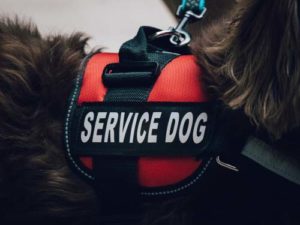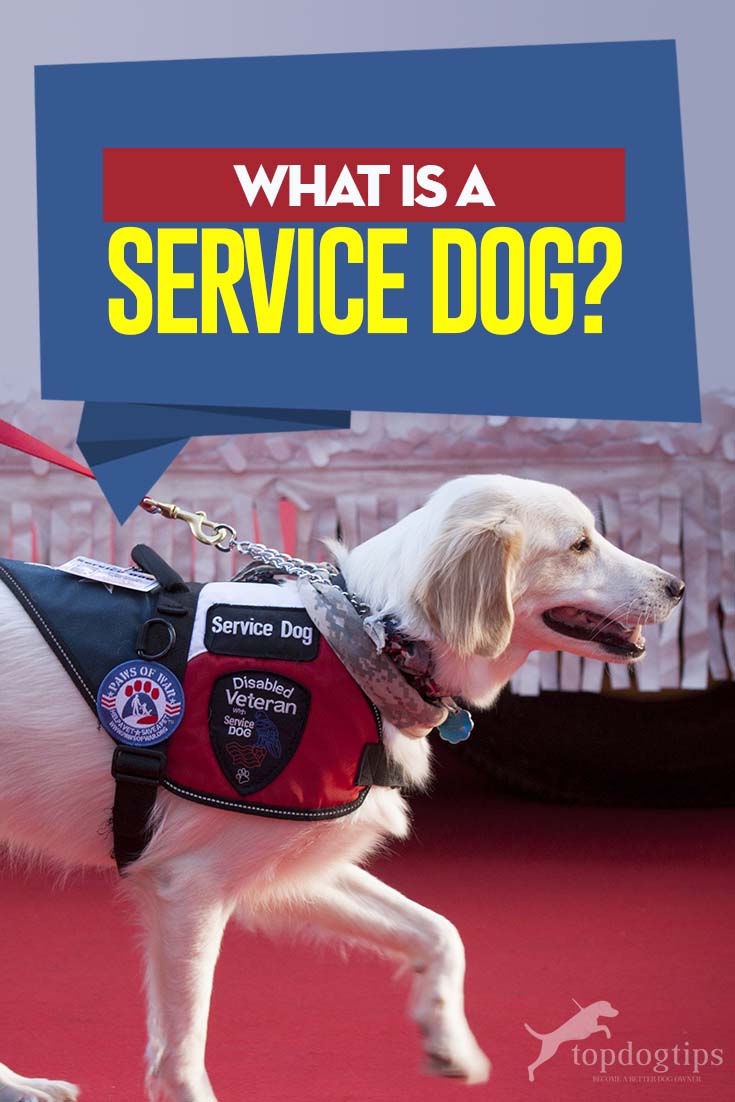Service dogs are all the rage these days, and for a very good reason. That said, some owners may consider their pets to be great service dogs, but it's not that simple. Even if your pet is well-behaved, perfectly trained, knows all the tricks and the best way to help us in a difficult situation, it cannot be categorized as a service dog. Here's what a service dog actually is.
MORE HERE: The Complete Guide to Different Types of Assistance Dogs
What Is a Service Dog?
Under Americans with Disabilities Act or simply ADA, service animal is defined as “a dog that is individually trained to do work or perform tasks for a person with a disability.” It is worth noting that from 2011 only dogs can be considered service animals within ADA.
These dogs are usually assigned to disabled people in need. Before being joined with their partner they are singled out as able to be taught very complex tasks and they undergo rigorous training.
The dog has to have the ability to assist with a particular disability that a person has and is not used for general assistance in everyday tasks of the people who don’t have confirmed disability.
How Can a Service Dog Help?
A service dog can help people with different conditions, and here are some of the most common ones:
- Assistance to the people in a wheelchair who are having difficulty walking on their own.
- Guiding visually or hearing impaired people. In this case, the dog’s sensory senses are trained so that he is able to lead or alarm the person with a disability about its surroundings.
- Assistance to the people with different illnesses, such as diabetes, in which case the service dog is trained to scent low blood sugar. Other common illnesses include frequent seizures because the dog is trained to protect his partner or alarm other people when the seizure occurs.
- Helping people with some mental disorders such as depression, panic attacks, PTSD and other psychological disabilities. In these cases, the dogs are trained to recognize irregular behavior and calm down the person in need.
Remember that even though you are going through a difficult phase of your life, it doesn’t mean that you will be assigned a service dog or you can start calling your own dog an assistance dog. This type of dog has to be matched with a person with a disability by an official authority and only after the state of the person has been thoroughly evaluated.
Just because we would like our pet to be allowed to go everywhere with us, doesn’t mean that we should misuse this privilege granted to the disabled and bring suspicion to their particular needs.
Service dogs are improving the quality of life of the disabled people in the most amazing ways and the dogs with this duty are worthy of the highest respect.
Service Dog Under Law
 This special type of dog has the right to enter almost any public place in order to assist the disabled. Even when it comes to the restaurants which are not pet-friendly and even in the places with food where the rule says that animals are not allowed due to health concerns, they are the exception.
This special type of dog has the right to enter almost any public place in order to assist the disabled. Even when it comes to the restaurants which are not pet-friendly and even in the places with food where the rule says that animals are not allowed due to health concerns, they are the exception.
If you work in a restaurant or some fast-food chain, there is a possibility that you will come across a person with a service dog. Keep in mind that there are only two questions which you are allowed to ask a person:
- Is this a service dog which is assisting the disabled?
- What is the dog trained to help with?
Any other questions are considered to be breaking the ADA’s guidelines. You are also not allowed to ask for any additional explanations or ask for a medical confirmation that the dog is required.
The law also highly emphasizes that a person with a service dog cannot be treated differently than any other customer or charged more.
Can a Service Dog Be Taken Out?
There are only two cases when you are allowed to request for the dog to be taken out. One is if the dog misbehaves and his handler cannot restrain him, and the other if the dog is not used in indoor spaces. In both cases, ask the person nicely to take the dog out and offer assistance in a professional manner.
If you are allergic to the dogs, ask your colleague to replace you when serving a person assisted by a dog. Allergies or any other reason why somebody doesn’t want to be in the same room with the service dogs are not an acceptable excuse. If the reason is medical, the law requires for the handler and the affected person to be in different parts of the room, but nobody has the right to ask the handler to remove the dog.
Overall, service dogs have special privileges that other “regular” dogs don’t have and we should respect that and not interfere with their job.
How to Recognize a Service Dog?
Service dogs are sometimes marked by wearing a special west with the service dog emblem. However, if you don’t see the clear marker, be aware that you might still be dealing with one.
These dogs are not necessarily required to have any special markers. The dog should still wear a collar or a harness and be controlled.
If you work in a place where dogs are generally not allowed on the premises, it’s better to ask before jumping to conclusions. Kindly approach the guest and ask him if the dog is here to help with his special needs, and avoid any follow-up questions if the answer is yes.
In general, this kind of dog can be recognized by trained behavior, visible awareness of the surroundings and steady attention on his partner.
RELATED: How to Get a Service Dog for Anxiety or Depression (And How Much It Costs)
Can I Use My Pet as a Service Dog?
 It doesn’t happen very often, but the answer is yes. Dogs are very sensitive beings adjusted to people and their needs. If the dog spends a lot of time with a person with a disability, he may learn how to behave in crisis situations or how to guide a sensory challenged person.
It doesn’t happen very often, but the answer is yes. Dogs are very sensitive beings adjusted to people and their needs. If the dog spends a lot of time with a person with a disability, he may learn how to behave in crisis situations or how to guide a sensory challenged person.
If you are a person with a disability, keep in mind that it is not up to you to just decide that your pet can become your service dog. The dog needs to undergo the necessary checks to see if he is really able to help, and possibly undergo additional training before being recognized as the service dog under the law. If your dog meets the necessary conditions of helping you with the disability, ultimately he can become your service dog.
Difference Between a Service Dog and a Therapy Dog
These two types can often be mixed up, because their role is to help people with some life obstacles.
However, the Alliance of Therapy Dogs emphasizes that a therapy dog’s role is usually related to helping people with psychological difficulties, for morale boost or gaining confidence. They can help people go through a rough patch, beat depression, or improve their mood when combating a long illness. You can see this type of dogs in hospitals, hospices, kindergartens or some schools.
While a service dog sticks to his handler and his full attention is on him, a therapy dog will socialize with many people around him. The dog’s task in the latter case is not to pay attention to one person in particular, but to bring joy to as many people as possible. These dogs are very sociable, trusting and used to people.
One of the main differences is also in the legal status. Unlike a service dog, a therapy dog cannot walk with his owner wherever he wants. He is not granted any special privileges. If a place doesn’t allow animals to enter the room, he will not be excused from that rule. However, if you are accompanied by a therapy dog, you can ask if he may go somewhere with you because people would sometimes make an exception in these cases.
Summary
Service dogs have a noble task to fulfill. It is amazing when we think about how many bad things can be prevented or overcome when being assisted by a service dog.
Their main job is to make life easier for people with disabilities and they are quite good at it. This ability is also recognized by law, so broad animal regulations often don’t apply to them. Observing a service dog at work is yet another way how the dogs can amaze us.
PODCAST: TOP #100 – Therapy Dogs vs Service Dogs – What’s the Difference?













